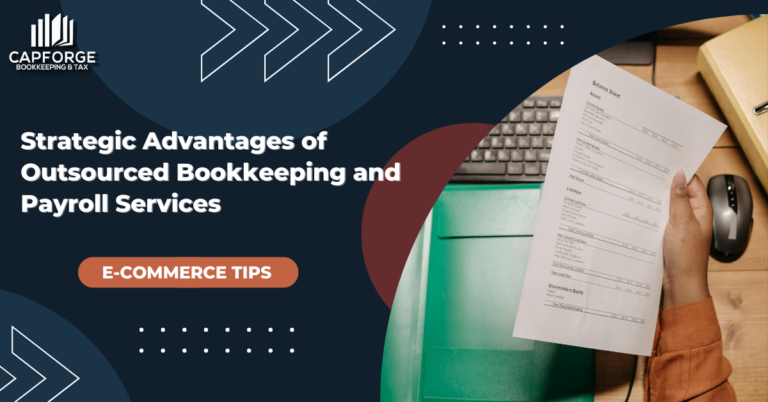Best E-commerce Inventory Management Software
Spending time mulling over an item only to find out it’s not available can be a disgruntling experience for any customer. While annoyances such as these might seem small compared to the bulk of your day-to-day, they’re enough to have customers switching their loyalties elsewhere. Thankfully, it’s a problem that’s easily solvable with the right inventory management software.
Using the right e-commerce inventory management software can spell the difference between keeping a customer and losing them. Whether you operate a traditional brick-and-mortar or an online store, success will always be elusive if you can’t accurately track inventory and move products to the right place at the right time.
With the bevy of e-commerce inventory management software options available in the market, picking the right one can be a real head-scratcher. Some options offer full automation and a complete suite of integrations, sales, and tracking features, and others are simple and compact but are free to use. The best one will depend on both your budget and the type of store you’re running.
To help ease your decision fatigue, we’ve dutifully created a roundup of the best options available in the market below, so read on!
What is E-commerce Inventory Management Software?
Tracking inventory and making sure they’re where they need to be is essential for any e-commerce business. E-commerce Inventory management software, in a nutshell, is a tool to help e-commerce business owners manage their supply chain and make sure they have enough products to keep up with customer demand.
The right software should, at a minimum, allow business owners to avoid under- and over-stocking problems by keeping them up-to-date on inventory levels, orders, sales, and deliveries.
What To Look For?
1. Real-Time Inventory Management
Any e-commerce inventory management software will have this basic feature. This is what will allow you to track inventory, sales orders, and warehouse transfers in real-time.
2. User-Friendly Interface
Naturally, you want something easy to use and won’t need extensive training to navigate. Any software that uses an overly complicated interface requires a steep learning curve and will cause frustration among end-users. The best e-commerce inventory management software will be intuitive, straightforward, and will have all relevant information laid out in a manner that lends itself to faster and more informed decision-making.
3. Inventory Alerts
This is another key feature to have in your e-commerce inventory management software that will save you from having to constantly monitor inventory information on a screen. With an inventory alert feature, you’ll be notified of any under- or over-stocking issue via email or SMS, giving you the ability to make timely decisions and maintain operational control even while attending to some other area of your business.
4. Reporting
A robust reporting feature is essential for any e-commerce inventory management software. To get the most out of your software, you’ll need it to tell you more than the state of your inventory — you’ll also want it to generate the relevant reports that will allow you to plan and respond to sales trends efficiently. Most inventory management software can generate standard reports such as invoices, purchase orders, order history, and the like, but some will have additional reporting features to give you a bird’s eye view of your business by showing you information such as what products are selling well, and more.
———
Quickbooks Commerce is a popular cloud-based inventory management tool designed for e-commerce businesses. It integrates seamlessly with popular e-commerce platforms such as Shopify, Amazon, WooCommerce, and more, allowing you to track and fulfill orders from a single application.
This powerful e-commerce tool offers real-time management of inventory across multiple sales channels and warehouses, lets you create purchase orders or issue invoices in one easy-to-use interface, and keeps tabs on your inventory, alerting you when a product is running low or is out of stock.
Its robust reporting feature can generate standard reports such as sales orders and order history, as well as generate special reports to give you insight on your customer base and the performance of each of your products and sales channels.
In addition, it has built-in accounting features that can track your income and expenses, help you maximize tax deductions, and calculate sales tax.
———
Zoho Inventory Management is another cloud-based option in the inventory management software space that is popular among online business owners.
It integrates with e-commerce platforms such as Amazon, Etsy, Shopify, and more, and keeps you updated with your inventory across multiple sales channels from one place.
From order fulfillment to packing and product delivery, Zoho allows end-to-end tracking of inventory, whether individual inventory or in batches, from anywhere in the supply chain, and from a single application.
You can also create purchase orders and shipment orders with ease, and get notifications as well as real-time updates on the level of your inventory to allow you to make informed decisions on the fly.
Conveniently, Zoho Inventory Management uses an easy-to-understand interface and can sync with other Zoho cloud-based applications such as Zoho CRM and Zoho Books for additional customer service and accounting functionality.
While Zoho Inventory offers a free tier, this includes basic functions and a set limit on sales orders. If you have a complicated workflow, require more features, and want to be able to track more warehouses, then you’ll need to upgrade to a paid plan.
———
Katana Manufacturing ERP is a cloud-based inventory management tool with a focus on small to medium-sized manufacturers. It integrates with e-commerce platforms such as Shopify, Amazon, WooCommerce, and others, and can sync with other cloud-based platforms like Xero and Quickbooks for additional CRM and accounting functionality.
If you need a single place to get an overview of all the shifting parts of your manufacturing business, then Katana might be the best tool for you. It features live inventory and manufacturing management to give you full control of your business’s production operations, lets you track raw materials, finished goods, and the movement of products across multiple warehouses in real-time, and gives you the ability to plan out the production process in the most optimal way possible.
With the Shop Floor App, you can instantly communicate and send out production orders, tasks, and notes to anyone involved in shop floor operations and keep track of all floor-level activities. Other features include bar code scanning, syncing orders across multiple sales channels, batch and lot tracking, and more.
Additionally, Katana uses a visual interface that’s intuitive and easy to navigate, and they provide live support and an extensive knowledge base to customers who need help in implementing any of the features.
———
Netsuite ERP is a cloud-based ERP that does more than just inventory management. Rather than offering a boilerplate solution, Netsuite offers a customizable, multi-functional management suite consisting of different ERP modules that derive information from a shared database.
These ERP modules include Financial Management, Order Management, Production Management, Supply Chain Management, and more.
As far as Netsuite’s inventory management module is concerned, it has all the features one would expect, including tracking and overviews of all inventory across multiple warehouses, stores, dropshippers, and sales channels.
All tasks related to inventory management such as product replenishing, order fulfillment, purchasing, cycle counting, and the like, can be automated, making it suited for businesses of any size.
The inventory management module also includes real-time updates and robust reporting to give business owners insight into their inventory, products, sellers, reorder points, and more.
Netsuite ERP’s complicated UI is where it takes a hit. Navigating the dashboard can be confusing because of the multitude of features and customizations, but once you’ve clambered up the learning curve, you’ll find you have practically everything you need.
———
Odoo is a nifty and versatile inventory management app that is free to use as a standalone. If you want to integrate it with other products in Odoo’s suite of business modules to get more functionality, however, you’ll need to get a subscription.
The app itself delivers many of the features one needs for basic warehouse operations management and allows users to track as well as automate the movement of products and materials between warehouses and delivery points.
You can get all kinds of alerts related to inventory management, and additional features include barcode scanning, cycle counting, automated requests, and more.
While the standalone inventory management app is user-friendly and easy to navigate, many users say the Odoo ERP system has a steep learning curve and requires some time getting used to, especially since the platform was designed to be customizable by developers.
If you’re an online seller and would like help getting your Amazon and ecom bookkeeping and accounting done right, we can help. Fill out the form below and we will be in contact with you right away.









One Comment
Comments are closed.